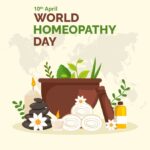🌈 7 Eye-Opening Facts About World Autism Awareness Day That Will Warm Your Heart
📅 Celebrated On: April 2
🌍 Observed Globally
💙 Symbol: Puzzle Ribbon / Blue Color
💙 Introduction: A Day to Light It Up Blue and Light Up Minds
World Autism Awareness Day, observed on April 2 every year, is a global initiative dedicated to promoting understanding, acceptance, and inclusion of people with Autism Spectrum Disorder (ASD). It’s more than just a day marked on the calendar—it’s a movement of compassion, inclusion, and advocacy that aims to shift global consciousness from mere awareness to genuine acceptance.
- 📅 Celebrated On: April 2
- 🌍 Observed Globally
- 💙 Symbol: Puzzle Ribbon / Blue Color
- 💙 Introduction: A Day to Light It Up Blue and Light Up Minds
- 📖 History of World Autism Awareness Day
- 📆 Timeline of World Autism Awareness Day
- 📊 7 Eye-Opening Facts About Autism and the Awareness Day
- ❓ Frequently Asked Questions (FAQs)
- Q1: What exactly is Autism Spectrum Disorder (ASD)?
- Q2: Is there a cure for autism?
- Q3: Why is blue the color of autism awareness?
- Q4: How can I support someone with autism?
- 🎯 Significance of World Autism Awareness Day
- 🔷 1. Reducing Social Stigma
- 🔷 2. Promoting Inclusive Policies
- 🔷 3. Empowering Autistic Individuals
- 🔷 4. Building Stronger Communities
- 🌐 Global Observance and Activities
- ✨ How Autism Awareness Impacts Daily Life
- 💬 Wishing Messages for World Autism Awareness Day
- 📌 Key Points to Remember
- ❤️ Why World Autism Awareness Day Matters to Society
- 🔚 Conclusion: Light It Up with Compassion, Not Just Color
With millions of individuals worldwide identifying as neurodivergent, this day fosters hope, education, empathy, and societal responsibility.
📖 History of World Autism Awareness Day
The idea for World Autism Awareness Day was first proposed by Sheikha Moza bint Nasser of Qatar, a prominent advocate for education and health.
The United Nations General Assembly adopted resolution 62/139 on December 18, 2007, declaring April 2 as World Autism Awareness Day, starting from 2008.
It is one of only seven official health-specific UN Days, highlighting its global priority status.
🔹 Key Goals at Inception:
Increase public understanding of autism
Celebrate the talents and skills of people with autism
Foster inclusive policies for autistic individuals in education, employment, and healthcare
📆 Timeline of World Autism Awareness Day
| Year | Milestone |
|---|---|
| 2007 | UN General Assembly adopts resolution for World Autism Awareness Day |
| 2008 | First observance held worldwide |
| 2010 | “Light It Up Blue” campaign initiated by Autism Speaks |
| 2015 | Theme: “Employment: The Autism Advantage” |
| 2020 | Pandemic fuels digital awareness and remote inclusion efforts |
| 2023 | Theme: “Transformation: Toward a Neuro-Inclusive World for All” |
| 2025 | Continued expansion of neurodiversity movement and inclusive education reforms globally |
📊 7 Eye-Opening Facts About Autism and the Awareness Day
Autism is not a disease—it’s a neurodevelopmental condition characterized by differences in communication, social interaction, and behavior.
An estimated 1 in 100 children worldwide is on the autism spectrum (WHO 2024).
Boys are nearly four times more likely to be diagnosed with autism than girls.
Early intervention can significantly improve the quality of life for autistic individuals.
Autistic people often excel in areas like music, mathematics, memory, and visual thinking.
Many adults remain undiagnosed due to lack of awareness and stigma, especially in developing countries.
The puzzle piece symbol represents the complexity and diversity of the autism spectrum.
❓ Frequently Asked Questions (FAQs)
Q1: What exactly is Autism Spectrum Disorder (ASD)?
ASD is a lifelong neurological condition that affects how a person interacts, communicates, and experiences the world. The term “spectrum” highlights the range of abilities and challenges autistic people may face.
Q2: Is there a cure for autism?
No, autism is not a disease to be cured. Instead, supportive environments, therapies, and acceptance help autistic people thrive.
Q3: Why is blue the color of autism awareness?
Blue represents calmness, acceptance, and compassion. The “Light It Up Blue” initiative uses this color to show solidarity with the autism community.
Q4: How can I support someone with autism?
Be patient and understanding
Use clear and respectful communication
Respect sensory sensitivities
Learn about neurodiversity and challenge stereotypes
🎯 Significance of World Autism Awareness Day
🔷 1. Reducing Social Stigma
This day educates people to recognize autism without judgment, removing the stigma that often leads to isolation, bullying, or unemployment.
🔷 2. Promoting Inclusive Policies
It encourages governments and institutions to design inclusive programs in schools, healthcare systems, and workplaces.
🔷 3. Empowering Autistic Individuals
The day empowers individuals with autism to celebrate their identity, build self-confidence, and pursue independent lives.
🔷 4. Building Stronger Communities
Awareness fosters community engagement, bridging the gap between neurotypical and neurodivergent individuals.
🌐 Global Observance and Activities
🌍 Worldwide:
Landmarks “Light It Up Blue”—from the Empire State Building to Burj Khalifa
Social media campaigns using hashtags like #WorldAutismAwarenessDay and #LightItUpBlue
Awareness walks, art exhibitions, and inclusive events
🇮🇳 In India:
NGOs like Action for Autism, NIMHANS, and Autism Society India hold events, webinars, and screenings
Schools and colleges host blue-themed days, storytelling sessions, and autism-friendly activities
✨ How Autism Awareness Impacts Daily Life
🧠 For Individuals:
Encourages self-acceptance and celebration of neurodiversity
Helps access early diagnosis, therapy, and inclusive education
👨👩👧 For Families:
Reduces isolation and guilt; helps families connect with communities and resources
🏢 In Workplaces:
Encourages creation of neurodiverse-friendly workspaces
Promotes the idea that neurodivergent individuals can be exceptional problem-solvers and thinkers
🏫 In Schools:
Leads to development of individualized learning programs (IEPs)
Promotes tolerance, peer support, and anti-bullying initiatives
💬 Wishing Messages for World Autism Awareness Day
💙 “Different, not less. Let’s celebrate every unique mind this Autism Awareness Day.”
🧩 “Every puzzle piece is perfect. Wishing strength and pride to all autistic individuals.”
🌈 “On World Autism Awareness Day, let’s commit to kindness, inclusion, and love.”
🔵 “Let’s light it up blue—not just in color, but in compassion and acceptance.”
🧠 “Neurodiversity is a strength. Wishing you peace and power this April 2!”
📌 Key Points to Remember
Autism is not an illness; it’s a way of being.
Support means listening without judgment, providing accommodations, and celebrating strengths.
Inclusion is everyone’s responsibility—whether at school, at home, or at work.
Words matter: use respectful, identity-affirming language (e.g., “autistic person” if preferred).
❤️ Why World Autism Awareness Day Matters to Society
This day is vital to:
Bridge the empathy gap
Raise funding and attention for early interventions and special education
Promote a culture of empathy over exclusion
Encourage neurodiverse role models to emerge in media, science, art, and leadership
In a world growing increasingly conscious of mental health, neurodiversity should be embraced, not erased.
🔚 Conclusion: Light It Up with Compassion, Not Just Color
World Autism Awareness Day is not just about lighting buildings blue, but lighting hearts with understanding. As society grows more complex, embracing different minds and perspectives becomes a superpower, not a liability.
Let’s go beyond awareness—let’s practice acceptance, action, and advocacy. Together, we can build a future where every person, regardless of neurology, has the space to shine.








